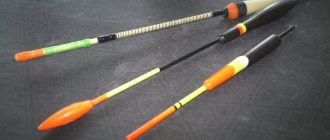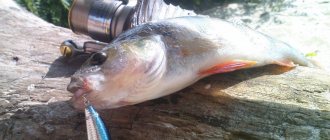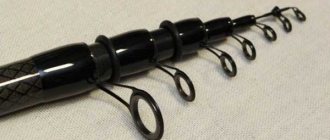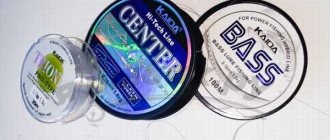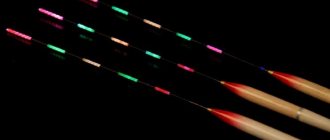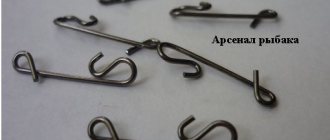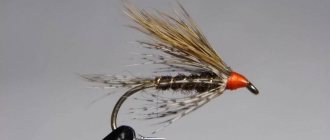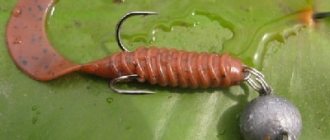Every fisherman wants to have the best tackle and equipment in his arsenal. This also applies to such a small thing as a float. Lovers of “silent hunting” constantly debate which float is better. There are a lot of opinions on this matter and they are all different.
Let's figure out how to choose the best float for fishing and discuss the most interesting opinions about this equipment.
Types of floats
All float products perform the same function - they report a bite. Essentially, the principle of operation is the same. When the fish starts to bite, then the bite indicator reacts and begins to move or sink.
Floats differ in shape, weight, size, color and type of material from which they are made.
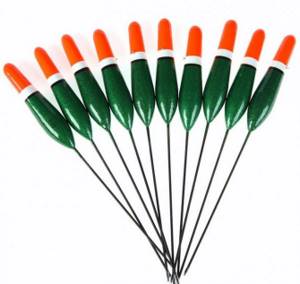
Conventionally, they can be divided into several types:
Teardrop-shaped. Very good for deep fishing. It has a low center of gravity, is very stable and shows a bite even in choppy water.
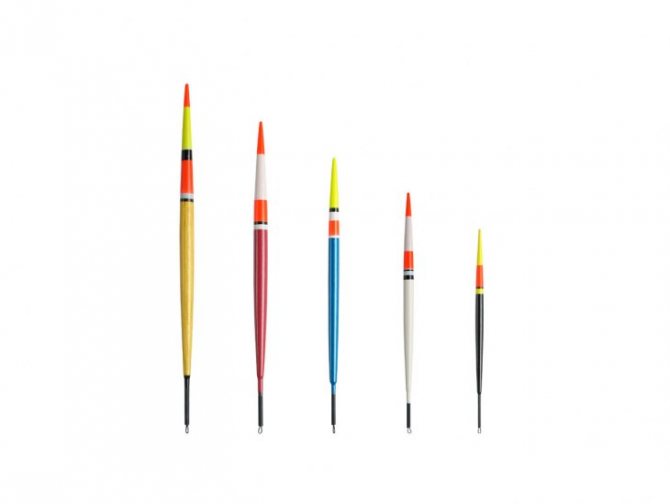
Spindle. This species is very sensitive and is needed for catching cautious fish. It is advisable to use only for fishing in still water (stakes, lakes, ponds) with a depth of no more than three meters.

Ball. Very stable in strong winds.
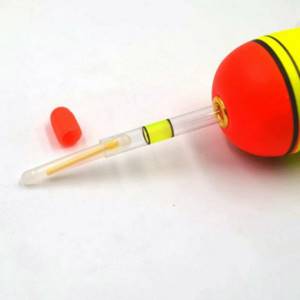
Straight. One of the most common. It has a rather simple shape. Suitable for fishing in good weather, in reservoirs with a depth of up to two meters.
Read here How to tie a fishing line to a reel - the best reliable knots and features of installing them yourself (100 photos and videos)
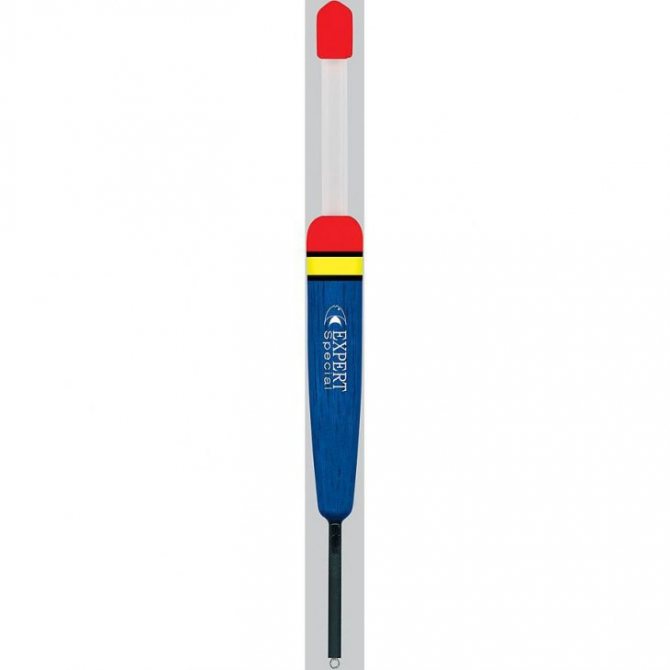
Inverted drop. An ideal choice for fishing at great depths with underwater currents.
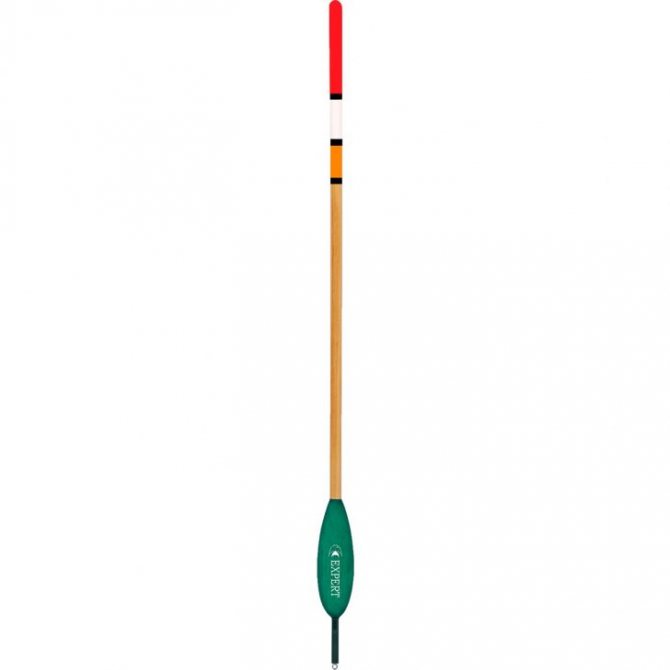
Olive. Used under different fishing conditions: waves, wind, calm weather. A fairly stable float, and essentially universal.
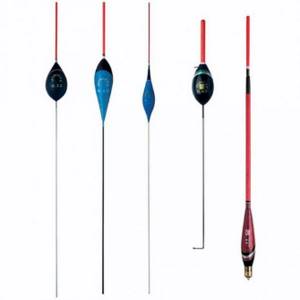
Double sided cone. Suitable for fishing on canals with weak and medium water flow. Very stable due to the long keel.
Floats for fishing in currents
What is special about fishing on the current? First, the float is not in one place. Secondly, it does not stand at a right angle to the surface of the water and thirdly, it always maneuvers (up and down), which gives a false sensation of bites.
Taking these features into account, there are special bite alarms for fishing in such conditions. In such buoys, the body is usually wide and compressed on both sides, which creates minimal resistance to the force of water pressure. The wide part of the float is the main part and is considered the control part, and a thin metal rod is provided inside the body for the center of gravity. Common types of such alarms are pear-shaped and egg-shaped floats. For example, the first of these is used when fishing at depth, but the second is more intended for long casts.
Let's also consider flat floats, which are also used for reservoirs with a current. These floats are highly specialized and differ in appearance from the rest. The highlight of flat buoys is the placement of the keel at an angle
Flat signaling devices work well at a distance equal to the length of the tackle and are absolutely not suitable for long-distance casting. The best place to use it is the shore, but the tackle is the plug. From a bridge or boat it is better to use a strong rod with rings. Why exactly this? With light (weak) tackle, you simply won’t be able to hook the fish well, you will only jerk it, and the float will only deviate slightly.
For example, if we take the notorious rod manufacturer Shimano, then for such fishing rods of at least power class 5 are suitable, and if you use a float with a load capacity of 20 grams or more - power class 7. The length of the fishing rod should be less than the depth of the equipment, otherwise it will simply be inconvenient for you to fish out the caught prey. If the depth is impressive, then assemble a flat buoy in the sliding installation version, in order to lead the hooked fish towards you.
Adviсe:
- Such floats should have a long two-color antenna, which will make the element more visible in the water. If you have a one-color antenna, you can paint it with a special marker.
- Make sure the indicator is in the correct position in the water.
Here are the wrong and right options:
- The float is much larger than necessary, since the antenna is tilted downstream.
- You did everything and chose correctly.
- The float is not fully loaded because the antenna is slightly tilted.
- If you didn’t load the float too much, in this case you will definitely miss the bite.
Normunds Grabovskis will tell you how to choose a float for fishing in currents
3.1 Torpedo float or Cralusso Bolo for fishing in currents
The inventor of this interesting and unusual signaling device was the Hungarian sports fisherman Karoly Klarik.
The peculiarity of this invention is not only its original shape, but also the ability to stay stable on the water surface at any flow speed. Such floats weighing from 0.5 to 40 g are loaded.
The technique of catching with such a signaling device is simple - throw it at the baited point and make a slow stepwise retrieve.
For more information about this Hungarian invention, watch this video from Romanov Kirill
3.2 How to make a flat float with your own hands
Alexandr noah in his video will show you how to make a flat float with your own hands
Long casting tackle
Many fishermen like to fish with long casts. This type of fishing is somewhat different from fishing near the shore.
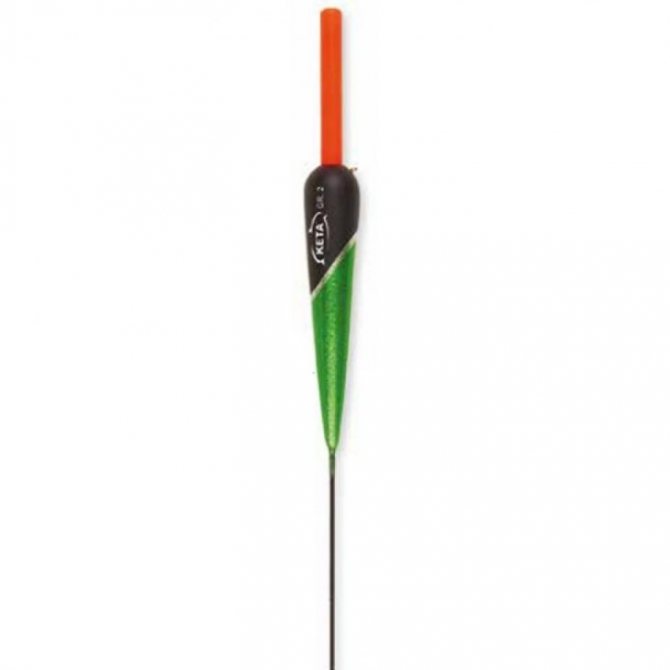
A feeder is attached to the end of the fishing line, which, due to its weight, allows you to throw the tackle quite far from the shore. Thanks to the inertia-free reel, the line does not get tangled.
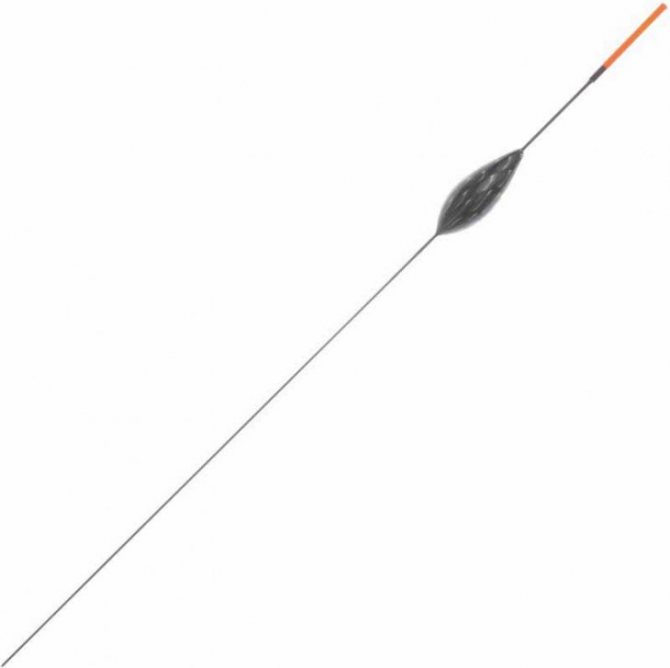
It is desirable that there is a rounding at the end of the tip. This will give stability to the bite indicator.
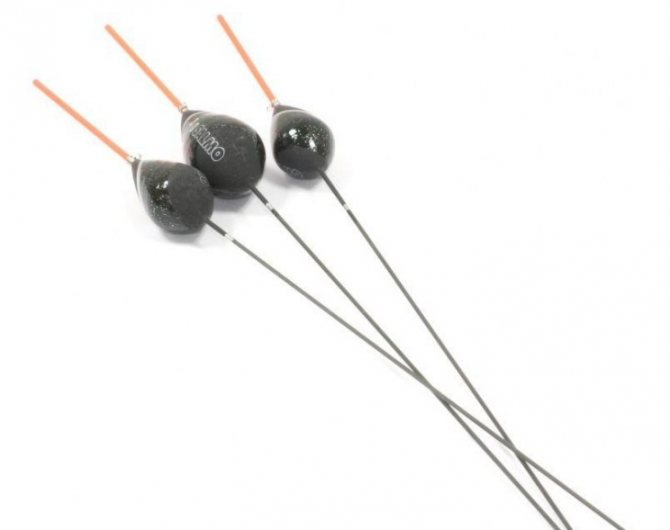
Note!
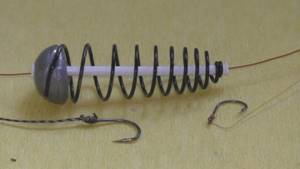
Fishing with a spring - rigs, baits, baits, gear and methods of fishing with a spring (80 photos)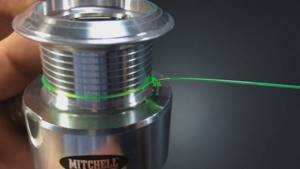
How to tie a fishing line to a reel - methods, tips on how to tie correctly and an overview of the most reliable knots (85 photos and videos)
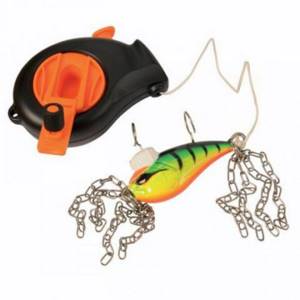
Cuts for wobblers and spinners - how to make a simple homemade cut. 110 photos and videos of practical tips
Fishing with a fly rod
Fishing with a fly rod is fishing from a boat or near the shore. This type of fishing is mainly used in reservoirs with stagnant water.
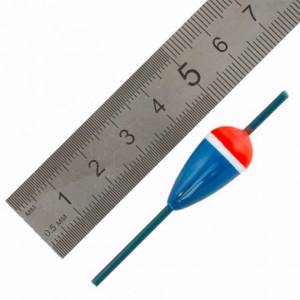
The best float for a fly fishing rod is considered to be an olive. This type of gear floats very well and has good information content. This allows you to notice even the weakest bite.

Float
Fishing / Fishing tackle / Float rod
The weight, shape, and size of the sinker are closely dependent on the other part of the fishing rod - the float. The float performs two roles: it holds the sinker and the hook with the nozzle at the desired depth and signals the angler about a bite. By how the float “behaves”, the fisherman determines the moment of hooking, that is, such a sharp jerk of the fishing line, as a result of which the hook picks up the fish.
The basic requirements for a float are as follows: with the smallest size, it must have the greatest load-carrying capacity; when grabbing and pulling the nozzle, provide the least resistance to the fish: and most importantly, be as sensitive as possible when biting, that is, react to the slightest touch of the fish on the nozzle. Only a very sensitive float gives the angler reliable information about what is happening around the hook. The float began to tremble slightly, which means the fish is trying the bait with its lips, you need to get ready; the float went to the side or dived into the water - the fish took the bait in its mouth and tried to run away with it without missing a hook; the float floated up and fell on its side - the nozzle was raised from the bottom, it’s time to fish out the prey. The sensitivity of a float is influenced by many factors: its shape, size, what material it is made of, and even how it is attached to the fishing line. The family of floats is diverse. The simplest is an ordinary bottle cap, tightened across a double loop of fishing line. However, it is used by the most unassuming anglers. It does not convey the fish bite well, and in order to change the depth of immersion of the nozzle, you need to re-tie its fastening. The best floats are made from the same cork, but processed to resemble an oval or ball and have an axial hole. The fishing line is passed through this hole and secured with a wooden or bamboo pin, or even a simple match. Such a float moves easily along the line and better informs the fisherman about a bite. A float made from kugi (a type of reed) is not bad: it is light, silently floats on the water, can be of different carrying capacity, is highly sensitive, but... too fragile. Its breakdown often spoils the angler’s mood. Floats made from sedge bark or other tree species, on the contrary, are durable, but very heavy. They are used when there is no better material at hand.
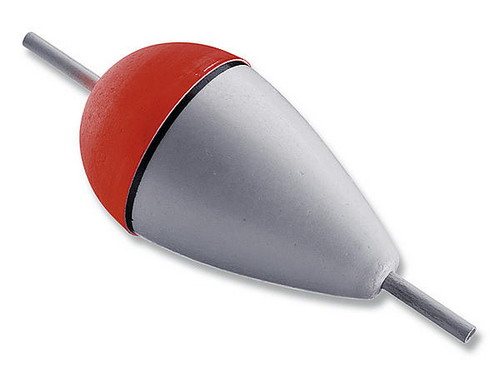
Goose feather floats perform well in calm waters. They are light, stable on the wave and very sensitive, which is extremely important when fishing for cautious fish. Unfortunately, their carrying capacity is low, which sometimes makes long-distance casting of the nozzle impossible. More advanced floats are produced by industry from polystyrene and polyethylene. They come in a wide variety of configurations and sizes. A highly elongated spindle-shaped float is considered the best. However, neither cork, nor plastics, nor cougar and feather can compare in quality with foam plastic. This material has become universal for the manufacture of floats. It is light, well processed, does not absorb moisture and is quite durable. Some of our enterprises and a number of cooperatives have mastered the production of various foam floats. However, craftsmen prefer to use homemade ones. Along with the above qualities of the float, it is also essential that it does not scare away the fish with its appearance or splashing when falling on the water and leaving the water, and that it is conveniently and securely attached to the fishing line. A float, the lower part of which (and for greater “sensitivity” the float should be immersed 3/5 of its length) is painted in a “neutral” color, that is, does not attract the attention of the fish too much, especially if fishing is at a depth of two meters or less. , which imitates a randomly floating object - tree bark, a withered leaf, etc. Suitable colors for this: dark brown, brown-green, etc. The colors of the surface part, on the contrary, should ensure good visibility of the float in any conditions. Some anglers try to paint the top of the float bright red. This should not be done - red color tires your eyesight. The following color combinations are recognized as the best: bright yellow + black; white + purple. Recently, floats with a high “mast” have gained great recognition, when the upper rod of the float has a length of 5-10-15 centimeters or more. Well balanced with the load, such a float protrudes from the water only with its “mast”. When bitten, the “mast” easily goes under the water and offers almost no resistance to the fish. The top of such a float is usually painted as a “zebra” (black + white + yellow). This allows you to see the float during the longest casts.
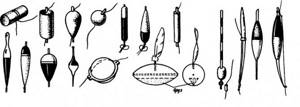
Rice. 8. Floats
Floats are attached to the fishing line in several ways. It was discussed above how to wrap a double loop around a cork and how to pass the fishing line through the axial hole, wedging it with a pin. But these methods are considered outdated. In addition, many industrially produced floats now do not have an axial hole, but are equipped with a special ring (“eye”). There are two most common ways to attach a float to a fishing line using a ring. The simplest is when a double-folded fishing line is inserted into the eye of the float, thrown over it and tightened. The advantage of this type of fastening is that you do not need to tie any knots or use any devices. But there are several disadvantages. On a thin fishing line, if it is necessary to move the float up or down, it can be very difficult to loosen the loop: during the fishing process, it spontaneously tightens tightly. On a thick fishing line, on the contrary, with sharp hooks the float “rides” and does not hold the set depth. These shortcomings are removed by using a vinyl chloride tube (a piece of electrical wiring insulation) and a metal pin. Take a small (2-2.5 cm) piece of thin (0.2-0.3 mm) copper or other soft wire, insert it into the eye of the float and bend it in half. The ends of the wire are slightly curled and, with a little effort, inserted into a vinyl chloride tube that was previously placed on the fishing line. The diameter of the tube should be selected according to the thickness of the pin. It must “sit” tightly on it, otherwise it is no wonder you will be left without a float. For greater reliability, you can bend the ends of the pin passed through the tube in the opposite direction. The recommendations of some authors of fishing manuals to make pins for attaching floats from pins or single-hook fishing hooks are untenable. With pins of this kind, floats tend to slip off when hooking. All floats attached to the fishing line with rings have one important advantage - they always stay vertical on the water and, therefore, are visible even in the waves. But... with a sharp jerk of the fishing line upward (when hooking), they all turn over and loudly slap the water (“gurgle”). This scares the fish. Sometimes after such a “slap,” the bite lasts for a long time, or even stops altogether. Practice has found a way out of this situation: they began to attach the float to the fishing line not at one, but at both ends. And so that it “gurgles” as little as possible, both its upper and lower halves are made conical. Such a spindle-shaped float quietly enters the water, does not provide strong resistance to the pecked fish and does not create noise when hooking. True, when fishing in a current, a float attached to a fishing line at both ends, the further it moves from the angler, the more it tilts (following the fishing line). But here the “mast” comes to the rescue. The elongated lower (underwater) end of the float also helps the float to “bow” less: under the weight of the load, it (by the property of a lever) always strives to maintain a vertical position. Fastening a spindle-shaped float using small (10-15mm) pieces of nipple rubber can be considered universal. Nipple tubes that are put on the fishing line in advance are pulled onto the float so that on the “mast” the tube is at the very base (bottom), and on the underwater part - at the very end: this arrangement of the tubes helps the float to stand straight. Fastening with nipple rubber is good not only because it holds the float securely and allows you to easily move it up or down the line, but also makes it possible to change a heavier float to a lighter one or vice versa. The need for this often arises during the fishing process. Let's say small fish start to bite - if you don't catch it with a fishing rod with a large float - not only will it not drag it under the water, but it won't move it either. On the contrary, for hunting predators, a float that is less sensitive, but has a sufficient load-bearing capacity so that live bait (a small fish attached to a hook) cannot drown it. There is no clear answer to the question of how many replaceable floats a fisherman should have. Thrifty people carry a whole arsenal of them with them, others prefer to have one for all occasions. Such a float, by the way, was designed by craftsmen. It's called: typesetting variable load capacity. Non-glued foam cylinders and cone tips are placed on a bamboo or plastic rod. It turns out the same spindle-shaped float, only made up of separate parts. To reduce the load capacity, several cylinders are removed, to increase they are put in place. It seems that such a float cannot be considered ideal: when transferring the nozzle, it “drags” water behind it in the joints; To ensure that parts of the float do not crawl along the rod, additional fastening is required. And you can’t expect high sensitivity from it - after all, each removable cylinder should have a corresponding load in store. Experienced anglers usually have three or four floats in stock: light, medium, heavy and live bait. The farm is small, but you can fish in a variety of conditions. For fishing in still water, as well as for hunting small fish, a light float that can hold a sinker weighing 3-5 grams is suitable. In weak currents, you need a medium float with a carrying capacity of up to 10 grams. Strong currents, wind, and the need to make long casts require a weighted float with a carrying capacity of 15 grams or more. Super-heavy floats, capable of holding a load weighing 30-40 grams, are used only when catching predators. Such a float is clearly visible from a distance and reliably holds live bait at a given depth. Of course, each of the listed floats must be “coordinated” in advance at home with the corresponding load, that is, its highest sensitivity must be achieved. When fishing from the shore, especially in shallow or overgrown ponds and lakes, there is often a need to cast the bait as far as possible. Here you cannot do without a sliding float. It differs from the usual one in that it is not firmly attached. The line is passed either through side rings specially embedded in the float, or through a through axial hole. After casting, the hook with bait and sinker sink to the bottom and carry the fishing line along with it. The float slides along it, remaining on the surface. As soon as the limiter installed on the line rests against the upper ring, the float is brought into working condition and stops the nozzle at a given depth. Limiters can be a thread wound around a fishing line, a knotted cord rubber band, a piece of vinyl chloride insulation secured with a small wooden wedge, etc. The size of the limiter should be such that it does not interfere with the passage of the fishing line through the guide rings on the fishing rod, but also does not slip through eyelet in the float. Well, how can you find out the depth of your favorite fishing spot and where to put the limiter on the fishing line? The same sliding float will tell you the answers to these questions. To begin with, the limiter on the fishing line is placed approximately at the expected depth. If after casting the float does not stand vertically (“on its butt”), it means that the line release is too large and the load lies on the bottom, therefore, the limiter must be moved down. After two or three such casts, the depth of the fishing spot will be determined. It remains to figure out exactly where the bait should be kept (at the bottom, closer to the bottom, or halfway), and you can start fishing. Although sliding floats are less sensitive than those that are firmly attached, they make it possible to reach the sites of large fish.
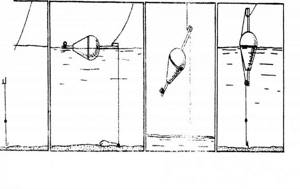
Rice. 8(a) Vanka-Vstanka
There is another type of float - self-loading - this is when the float and sinker are connected into one. The essence of fishing with such a float was revealed by the classic of Russian fishing literature, P. Sabaneev. “In shallow and clear water, fishing with an ordinary float and sinker is almost impossible: the fish, although greedily grabs the thrown bait, does not take it... meanwhile, if the weight is placed in the lower part of the float, then the latter acquires proper stability, while the bait, wriggling on a thin leash, has an incomparably more natural position and is grabbed by the fish without fear.” In our region, such floats are almost never used for open water fishing, most likely because there are no “transparent” and clean water bodies left.

Rice. 9. Methods of attaching floats to fishing line: a - double loop; b - pin in the axial hole; c - slip loop into the ring;
g - vinyl chloride tube and metal pin
However, in shallow waters, fishing with a float-weight (see Fig.)

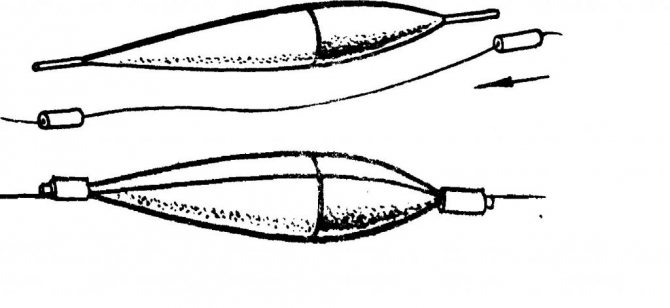
Discuss on the forum
Fishing on the current
For fishing on rivers with strong currents, specially designed gear is used.
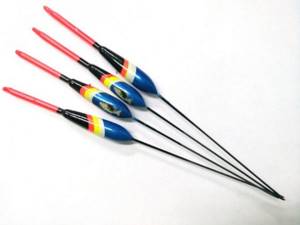
The body of the rig should create minimal resistance to flow. Therefore, it is flattened on the sides and quite wide.
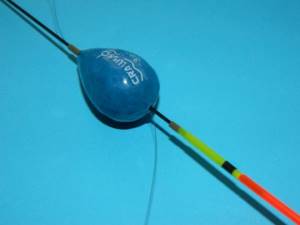
For stability, the float has two mounting brackets and a metal rod. This design ensures minimal influence of water on the performance of the gear. The best float in the current is considered to be flat.
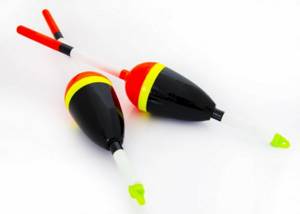
That's all. We hope that our article will help you choose a float easily, quickly and competently. Good luck with your fishing and have a good rest.
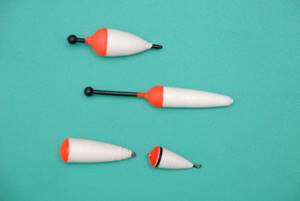
Let's understand the details
First, let's find out what a standard float consists of. Manufacturers of this gear distinguish three main parts: surface, underwater and the line dividing them formed by the surface of the water - the waterline. Each of these parts is in turn subdivided into several important float elements.

Antenna
Located in the above-water part, it is designed to improve the visibility of the float.
The size and color of the antenna are chosen so that it stands out sharply against the background of the water.
The thickness should be determined from the distance at which the float is thrown and the visual acuity of the fisherman. Some professionals define this parameter as follows: for every 5 meters of distance, the antenna diameter should increase by 0.5 mm.
However, the heavier the antenna, the more likely it is that its weight and windage can impair the stability of the float. For this case, this tackle has a keel.
Float keel
This part is designed to prevent the float from lying on its side.
Waterline
According to publicly available data, this is the line of intersection of the float with the water surface. Its position is not necessarily static, it can “change”, and does not have to be strictly along the drawn line on the body of the float. By changing the weight of the sinker, the waterline can be “moved.” However, we should not forget that the sensitivity of the float seriously depends on its position. Therefore, when experimenting with a sinker, do not overdo it, otherwise you may either be tormented by frequent bites or not see any at all.
Float body
This part determines the carrying capacity of the float, which is defined as the difference between its volume and weight. It is worth noting here that with different densities of the material, floats of exactly the same size will have different load capacities. Hence the conclusion - the greater the density of the material, the less the load-carrying capacity of the float.
The body of the float can be of completely different shapes. In nature you can find all variations from a thin long cylinder to a regular ball. Most fishermen know that each fishing condition, be it wind, waves or a large current, has its own float body shape. However, more and more often statements began to appear that not only float manufacturers, but also fishermen tend to exaggerate the dependence of the shape of the float body on fishing conditions. Certain studies have been carried out that have proven that the behavior of the float from a physical point of view does not confirm the great importance of the shape of the body of the float on its properties as a bite indicator.
Float mount
A standard float is attached to the fishing line at one or two points. The attachment point on the fishing line can be blind or sliding. The first is needed when the fishing depth does not exceed the length of the rod, and the second when the fishing depth is greater than the length of the rod.
Deaf. The design of the unit with this type of fastening consists of a cambric placed on a fishing line and a rod with which the fishing line is clamped in the cambric. The rod is connected to the float.
Hard. With this fastening, the float is well controlled - when it is pulled up with a rod or released in the current, it maintains a vertical position. Casting such a float requires care. At the beginning of casting, when the line is behind the angler’s back, the position of the float is with the antenna towards the tip of the rod. After the cast is completed, the float flies with its antenna forward, the float antenna is directed away from the rod. Before splashdown, when the fishing line is pulled, the float is turned over by the antenna towards the rod. When the float is turned over, the antenna may get caught on the fishing line, and, as a result, the antenna may become loose and fall out.
Photos of the best floats
Help the project, share on social networks 

0
